Matcha and Strawberry Chia Pudding
in Recipes
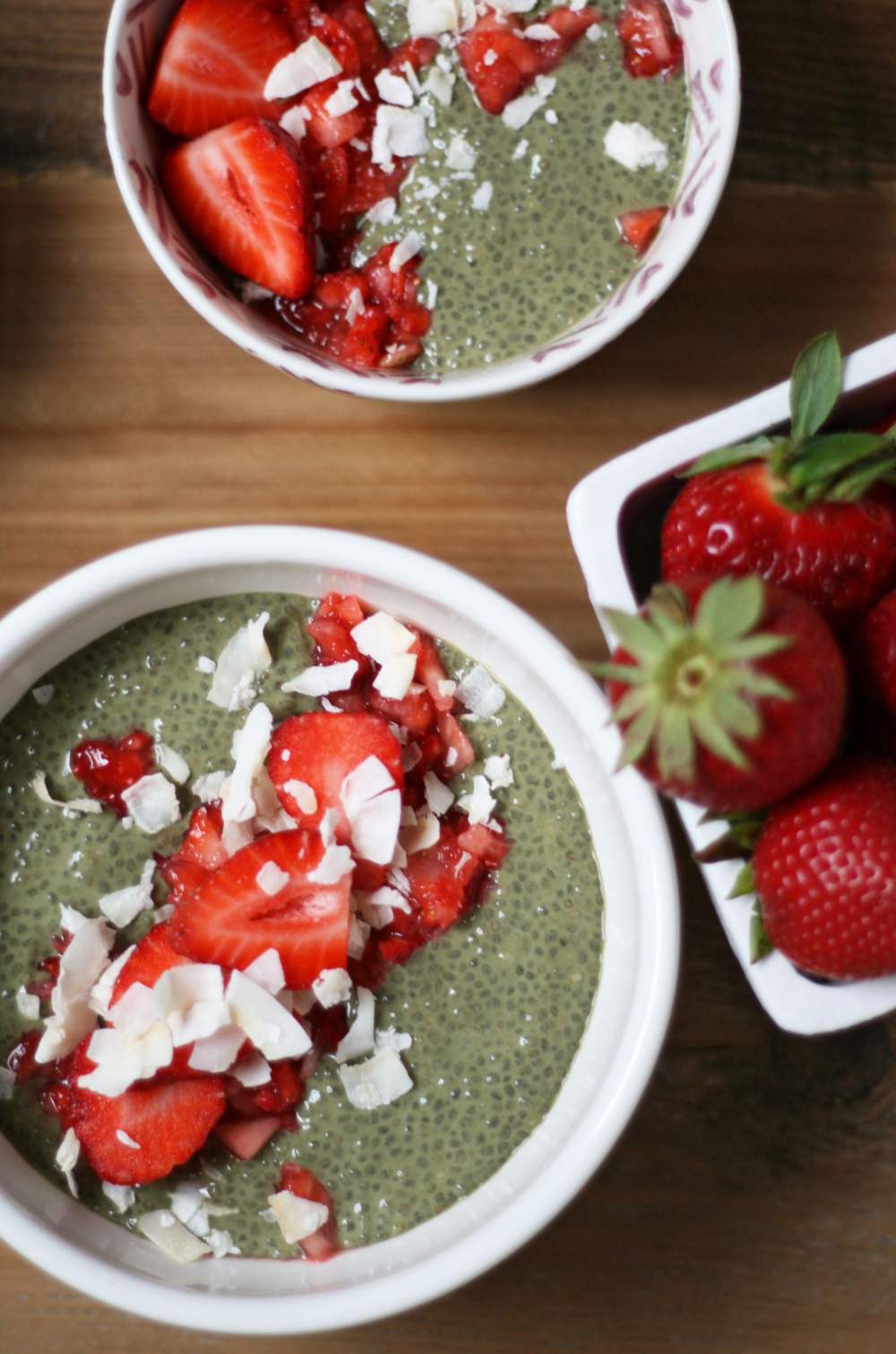
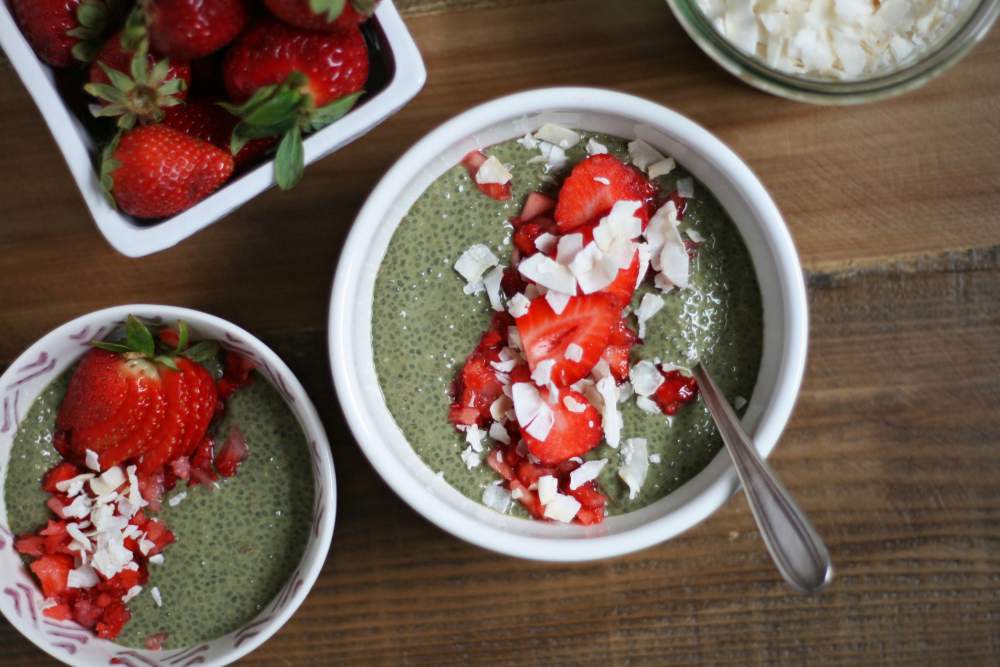
Now that the spring season has hit the Pacific Northwest in full force, at least at the farmer’s market, I’m crushing on all the spring things. Those spring things involve lots of leeks and asparagus, but mostly strawberries followed by strawberries, with a side of more strawberries.
The thing about Oregon strawberries? They don’t last. They’re picked in the morning, taken to the farmer’s market, and lovingly laid out for everyone to fawn over, nibble on, and snap photos of. (Hello Instagram foodie culture!) It’s here at my local Portland Farmer’s Markets where I buy strawberry pints by the flat and gobble up nearly half of them within 24 hours – If I wait any longer, they’ll be overcome by mush and mold. When it comes to local, sweet, seasonal strawberries – get them while you can, and eat them as soon as possible.
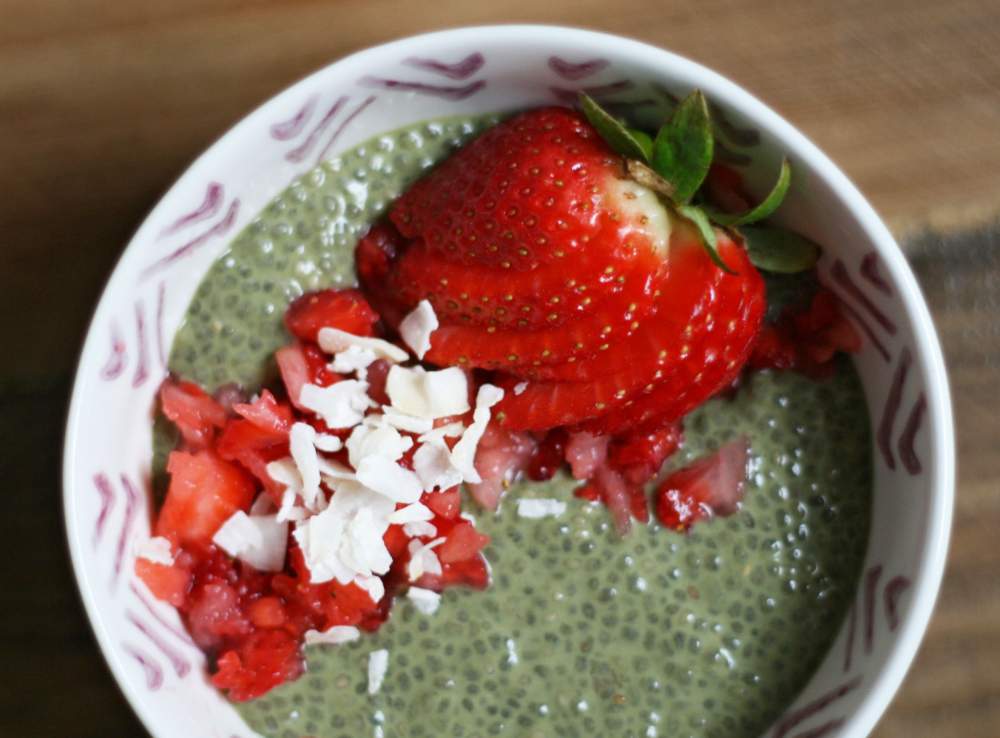
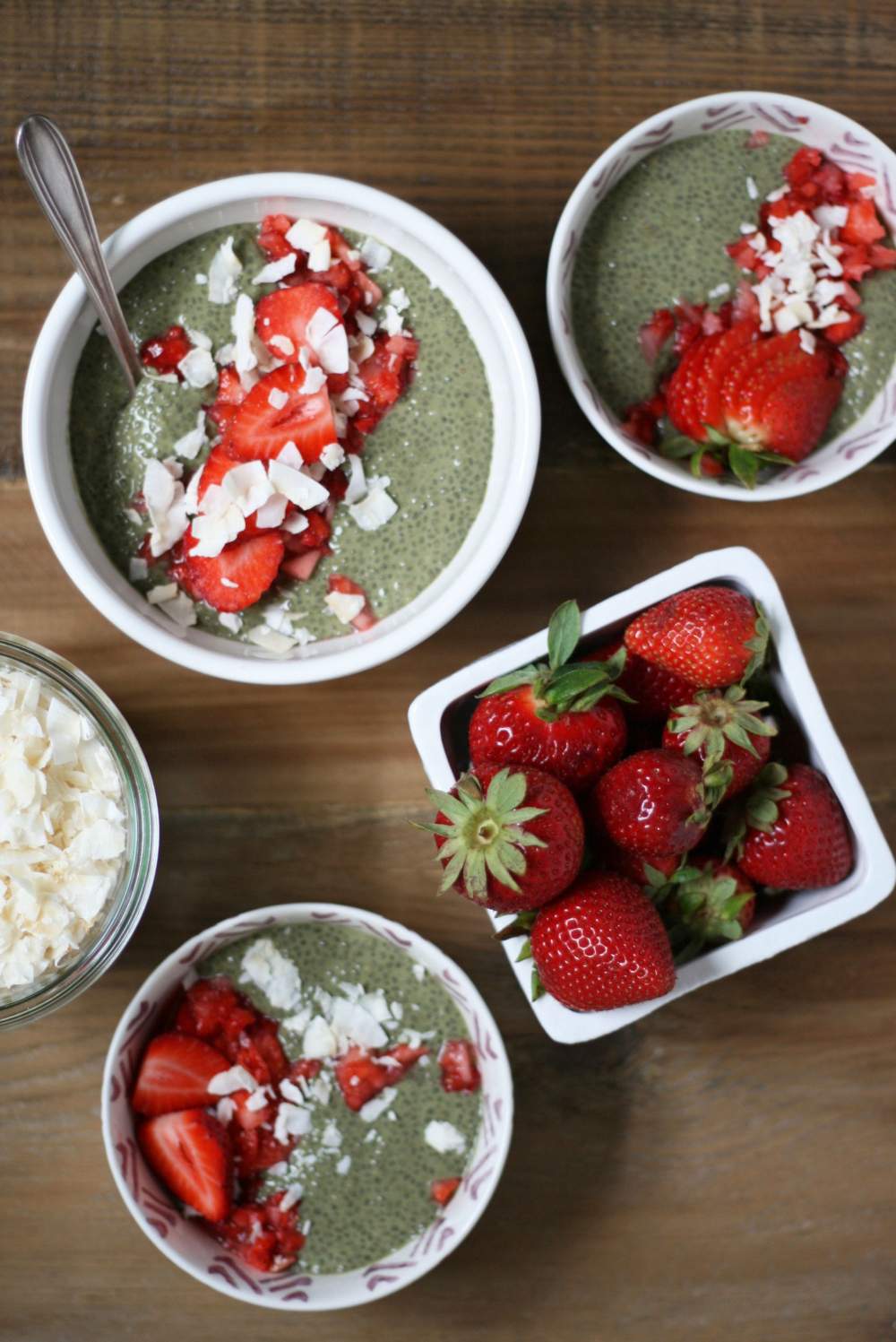
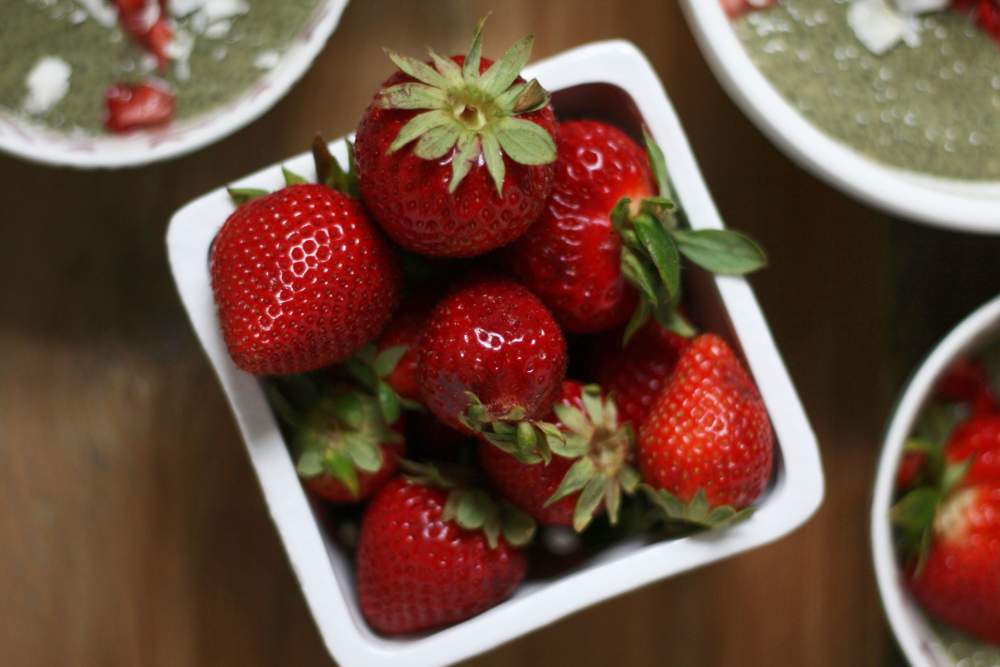
Strawberry Superpowers:
This shouldn’t be a problem, obviously, as these are strawberries we’re taking about: one of the most popular berries in the world. Strawberries are not only delicious and loved by people of all ages, but also a little nutritional star too.
Strawberries are a rich source of vitamins C and K, fiber, and flavonoids – plant powered compounds that function like antioxidants within the body seeking and destroying free radicals. In fact, strawberries’ unique flavonoid content makes them a valuable protector against inflammation, cancer, and heart disease. Their anti-inflammatory powers include the ability of their flavonoids to lessen the activity of the enzyme cyclooxygenase, or COX. Nonsteroidal anti-inflammatory drugs (NSAIDs,) such as asprin and ibuprofen, block pain by blocking this enzyme, which is linked to inflammatory conditions like rheumatoid arthritis, osteoarthritis, asthma, atherosclerosis, and cancer.(1) Unlike drugs that are COX inhibitors, however, our little strawberries do not cause any detrimental side effects like intestinal bleeding.
Strawberries also pack in a lot of nutrient density into their cute little red bodies. Just 1 cup of fresh strawberries contains:
Vitamin C: 113% DRI
Manganese: 28% DRI
Fiber: 12% DRI
Iodine: 9% DRI
Folate: 9% DRI
Potassium: 6% DRI
Magnesium: 5% DRI
Along with additional amounts of copper, phosphorus, biotin, omega-3 fats, and Vitamin B6. (2)
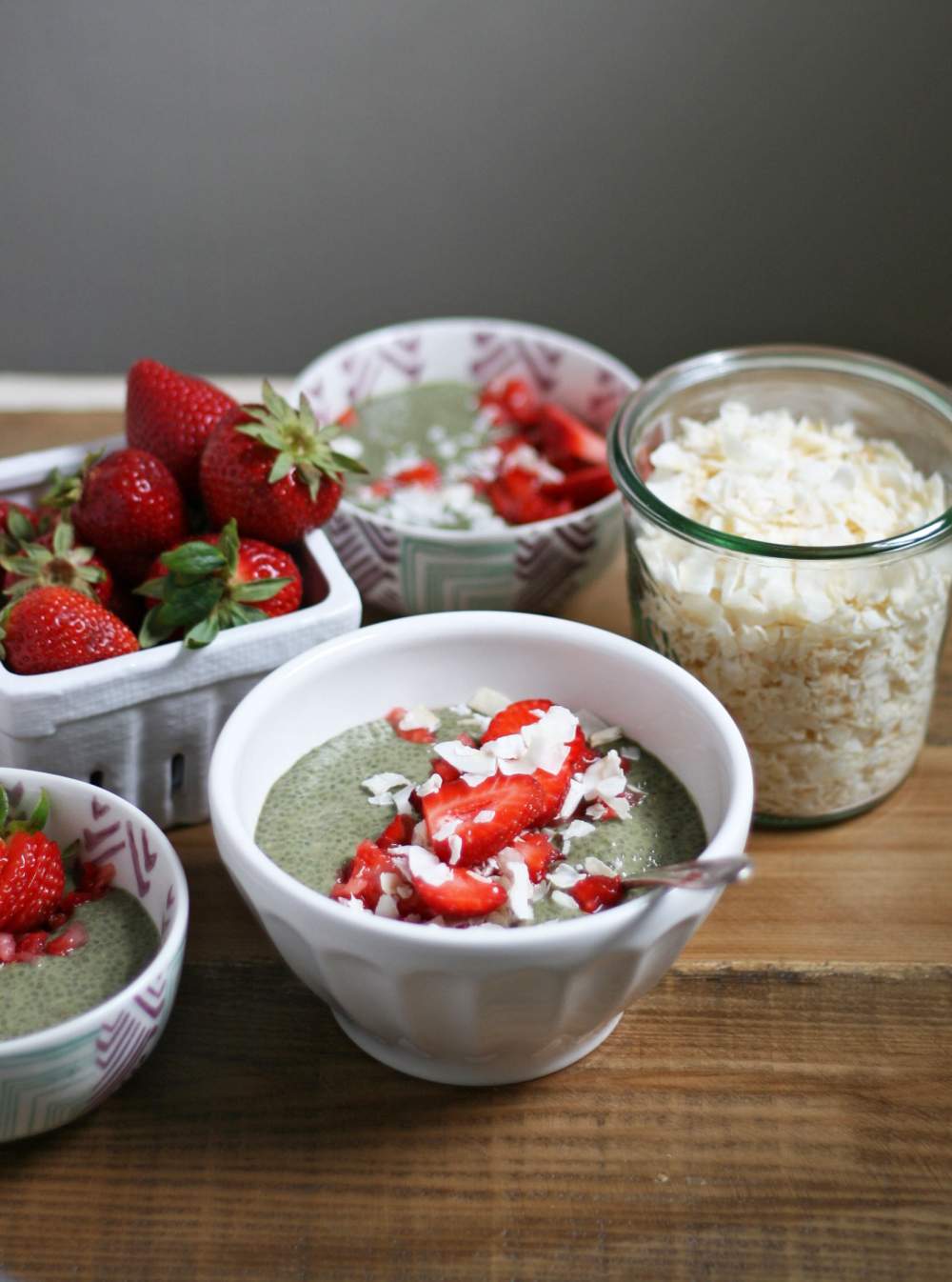
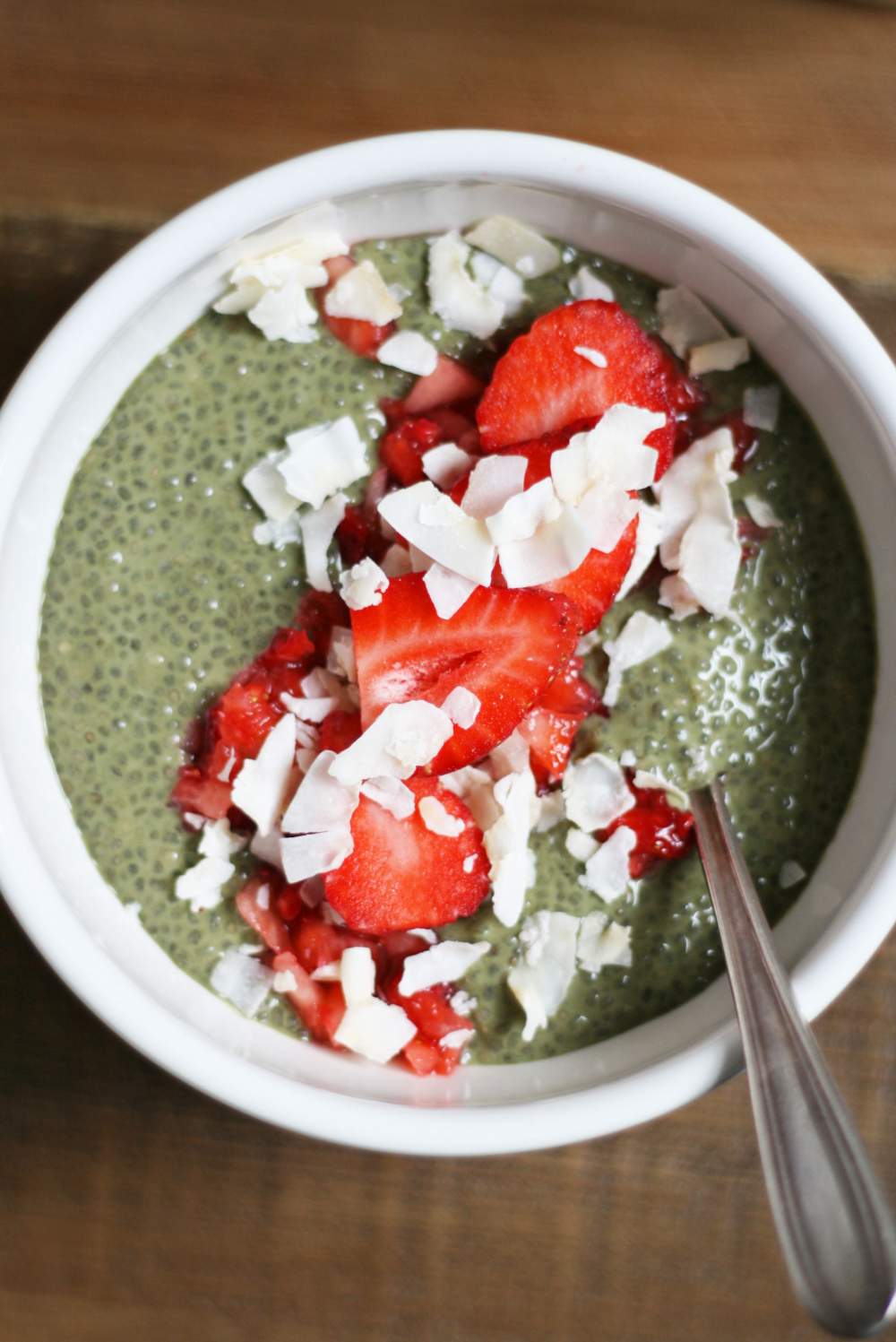
Of course, this chia pudding is all about the matcha and the strawberries together in one happy harmony. Matcha tea powder is a dream when mixed with creamy almond milk and protein filled chia seeds to make a quick and simple chia pudding. The addition of maple syrup adds the perfect sweetness, while helping to keep the recipe completely plant based. I love to garnish this pudding with unsweetened coconut flakes for a delicate sweetness and crunch, but the addition of chopped macadamia nuts or brazil nuts is also delicious.
Sweet and seasonal strawberries + antioxidant rich matcha + creamy almond milk + fiber filled chia seeds = one delicious and sweet way to celebrate spring!
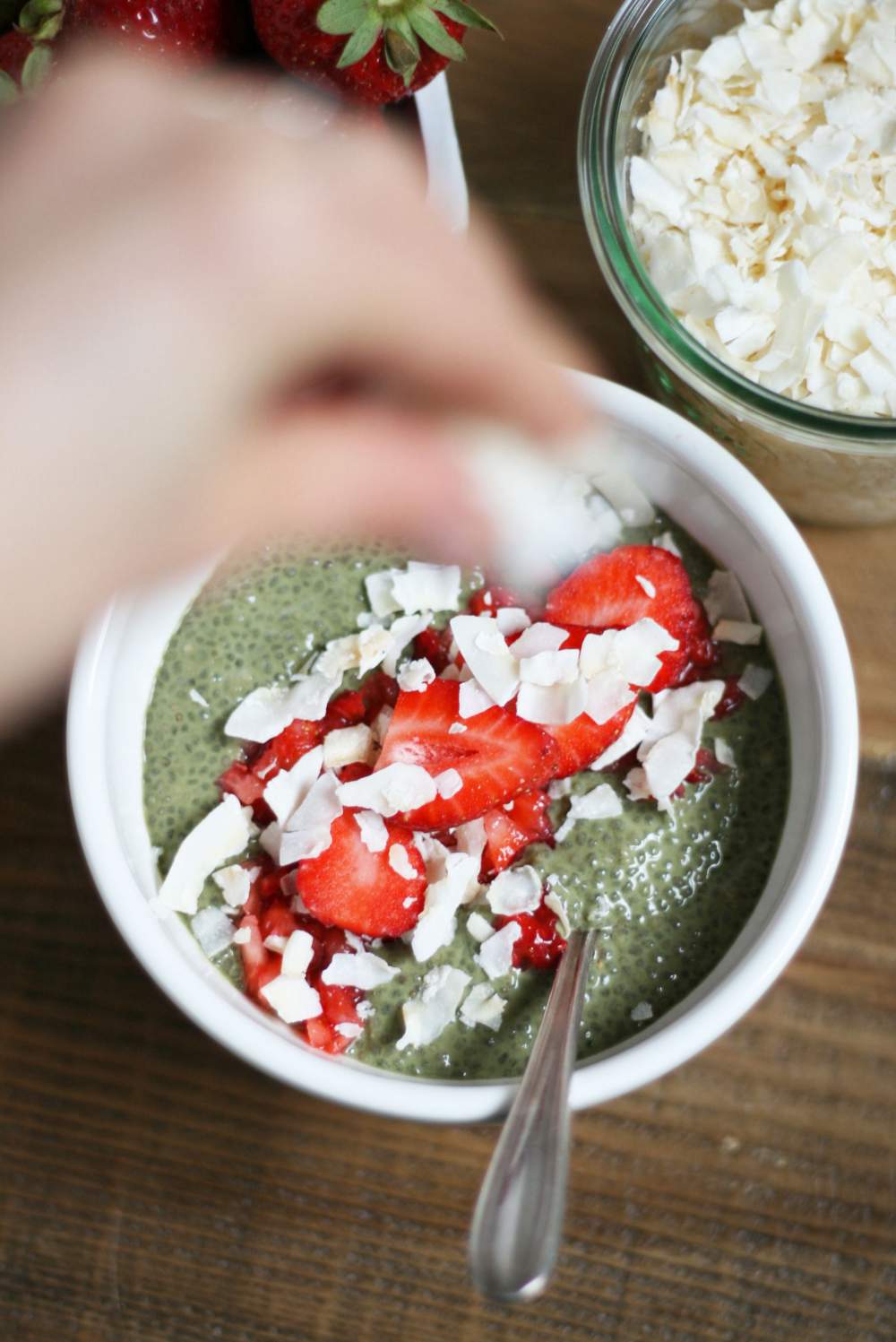
Matcha and Strawberry Chia Pudding
Serves 2-4
Ingredients:
2 cups unsweetened almond milk, homemade preferred
½ cup chia seeds
1 Tablespoon matcha powder
1-2 Tablespoons maple syrup, to taste
Pinch of sea salt
1 cup strawberries, roughly chopped
Unsweetened coconut flakes, to garnish
Method:
Combine almond milk, chia seeds, matcha powder, maple syrup, and sea salt in a large mason jar. Cover tightly and shake well. Let sit 5 minutes before shaking again and placing in the refrigerator to set 3+ hours, or overnight.
Serve chia seed pudding with sliced strawberries and coconut flakes. Enjoy!
Nourishing Notes:
-Matcha pudding will keep in an airtight container in the refrigerator for 2-3 days.
Resources:
1. Murray M, N.D. Strawberries. The Encyclopedia of Healing Foods. 2005.
2. Mateljan, G. Strawberries. The World’s Healthiest Foods. 2016
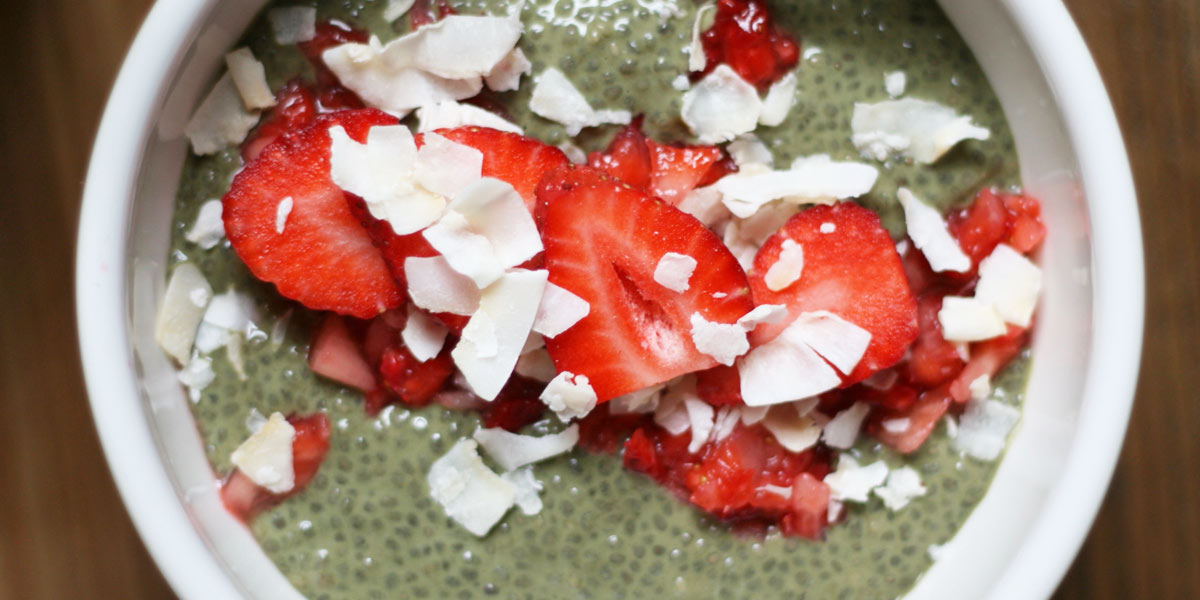




I love the brightness of the red strawberries against the matcha chia pudding. It looks absolutely beautiful! :)
i have never made a matcha chia pudding before! definitely something i need to try. it looks incredible.
I love this flavour combination! This pudding looks gorgeous with the green matcha. Will have to try it for sure!